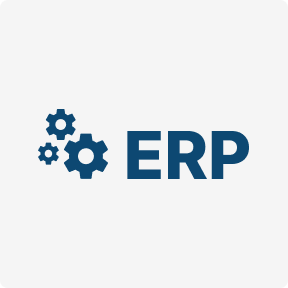This creates security policy content for various platforms, such as Debian, Fedora, RHEL, or Ubuntu, and security standards such as CIS Benchmark, HIPAA, PCI-DSS. The content represents the compliance benchmarks such as appropriate file owners or permissions and is distributed as a container image and independent of the operator https://www.globalcloudteam.com/ for rapid updates of the content. They identify the name of the container image to be taken from the registry and deployed as a pod on a node. They set the number of replicas of the pod to deploy, creating a replica set to manage the process. The labels indicated instruct the scheduler onto which nodes to deploy the pod.

Add a secret to your deployment configuration so that it can access a private
repository. If the latest revision is running or failed, oc logs will return the logs of
the process that is responsible for deploying your pods. If it is successful,
oc logs will return the logs from a pod of your application.
RED HAT DEVELOPER
Any BuildConfig objects created as part of new-app processing are not updated with environment variables passed with the -e|–env or –env-file argument. With the new-app command you can create applications from source code in a local or remote Git repository. For serverless applications, the Deployment option is not displayed as the Knative configuration resource maintains the desired state for your deployment instead of a DeploymentConfig resource.
Deployments and DeploymentConfigs are enabled by the use of native Kubernetes API objects ReplicationControllers and ReplicaSets, respectively, as their building blocks. The ImageChange trigger results in a new replication controller whenever the
content of an
image
stream tag changes (when a new version of the image is pushed). Use the
Topology openshift consulting view
to see your applications, monitor status, connect and group components, and modify your code base. Previously this knowledge only resided in the minds of administrators, various combinations or shell scripts or automation software such as Ansible. Override the build strategy by setting the –strategy flag to either pipeline or source.
Developer tools and services
Each time a deployment is triggered, whether manually or automatically, a
deployer Pod manages the deployment (including scaling down the old
ReplicationController, scaling up the new one, and running hooks). The
deployment pod remains for an indefinite amount of time after it completes the
Deployment in order to retain its logs of the Deployment. When a deployment is
superseded by another, the previous ReplicationController is retained to enable
easy rollback if needed. Only use ReplicaSets if you require custom update orchestration or do not
require updates at all.
- Developer-friendly workflows, including built-in CI/CD pipelines and source-to-image capability, enable you to go straight from application code to container.
- Third parties deliver additional storage and network providers, IDE, CI, integrations, independent software vendor solutions, and more.
- This is a step-by-step guide to creating an Apache Camel integration and deploying it as a Knative serverless service (close to low-code/no-code) using the community edition of the Visual Studio Code (VS Code) extension Karavan.
- This means the security, performance, interoperability, and innovation of Red Hat Enterprise Linux is extended throughout your infrastructure to provide a single platform that can run wherever you need it.
When a new z-stream release becomes available, the upgrade process triggers automatically if the update strategy was set to Automatic. If the update strategy is set to Manual then use the following procedure. This chapter helps you to upgrade between the z-stream release for all Red Hat OpenShift Data Foundation deployments (Internal, Internal-Attached and External). When you restore a volume snapshot, a new Persistent Volume Claim (PVC) gets created.
Technologies supported by Red Hat OpenShift Container Platform
The following ScanSetting object mainly contains schedule in the schedule value and the target hosts or machines for the node-level scan specifying the node-role.kubernetes.io label in the roles value. The scan begins at every 1 am and the node-level scan runs on the control plane machines (master) and worker machines (worker). More importantly, the autoApplyRemediations value specifies whether a fix for the scan is automatically applied and it is disabled in the example below.

In OpenShift, a Deployment object describes how to create or modify pods that hold a containerized application by defining the desired state of a particular component. ReplicaSets orchestrate pod lifecycles and guarantee the availability of a specified number of identical pods. Deployments can be represented as YAML files, often kept within the project itself to ensure consistency across different environments.
Pod-based Lifecycle Hook
While there are many sources for base images, acquiring them from a known and trusted source can be challenging. It is important to use secure base images that are up to date and free of known vulnerabilities. Luckily, you can use options such as Red Hat OpenShift Container Registry and Red Hat Quay to securely store and manage the base images for your applications. Other than the above features, OpenShift also offers on-premises version known as OpenShift Enterprise. In OpenShift, developers have the leverage to design scalable and non-scalable applications and these designs are implemented using HAproxy servers.

Red Hat’s product development cycle has always been rooted in open source and the communities that help to steer Red Hat’s products’ direction. Like Fedora is the upstream project for Red Hat Enterprise Linux, the projects listed here are the upstream versions of products that make up the Red Hat Ansible Automation Platform. OpenShift includes Open vSwitch software-defined networking (SDN) and also allows you to take full advantage of the Open Virtual Network (OVN) Kubernetes overlay, Multus, and Multus plugins that are supported on OpenShift. Get started in the developer sandbox, launch a trial cluster of Red Hat OpenShift Dedicated, or set up a trial of self-managed Red Hat OpenShift Container Platform. Start a cloud-based container project off right and base it upon a validated Red Hat Reference Architecture.
Deploying on Red Hat OpenStack Platform
An enterprise application platform with a unified set of tested services for bringing apps to market on your choice of infrastructure. Red Hat OpenShift Operators automate the creation, configuration, and management of instances of Kubernetes-native applications. Need to customize your Red Hat OpenShift instance and integrate it with other cloud provider services, but still run in the cloud? You can take the reins of existing managed Red Hat OpenShift, or deploy a cloud installation of Red Hat OpenShift and start to build out your own integrations with cloud services. As your hybrid cloud choices evolve, you need to minimize the impact on how your applications are deployed. In part three of the tutorial we will use the OCP console to deploy and test a simple application.

OpenShift Container Platform administrators can assign labels
during
cluster installation, or
added to a
node after installation. The ability to limit ephemeral storage is available only if an administrator enables the ephemeral storage technology preview. Rollbacks revert an application back to a previous revision and can be
performed using the REST API, the CLI, or the web console. The OpenShift Container Platform installation program offers you flexibility. You can use the installation program to deploy a cluster on infrastructure that the installation program provisions and the cluster maintains or deploy a cluster on infrastructure that you prepare and maintain. This command will output a container ID—you’ll need this later to clean up the running container.
4.2. Removing monitoring stack from OpenShift Data Foundation
A Rolling deployment means you to have both old and new versions of your code running at the same time. A rolling deployment typically waits for new pods to become ready via a readiness check before scaling down the old components. The aim is to make the change without downtime in a way that the user barely notices the improvements.
Deixe um comentário